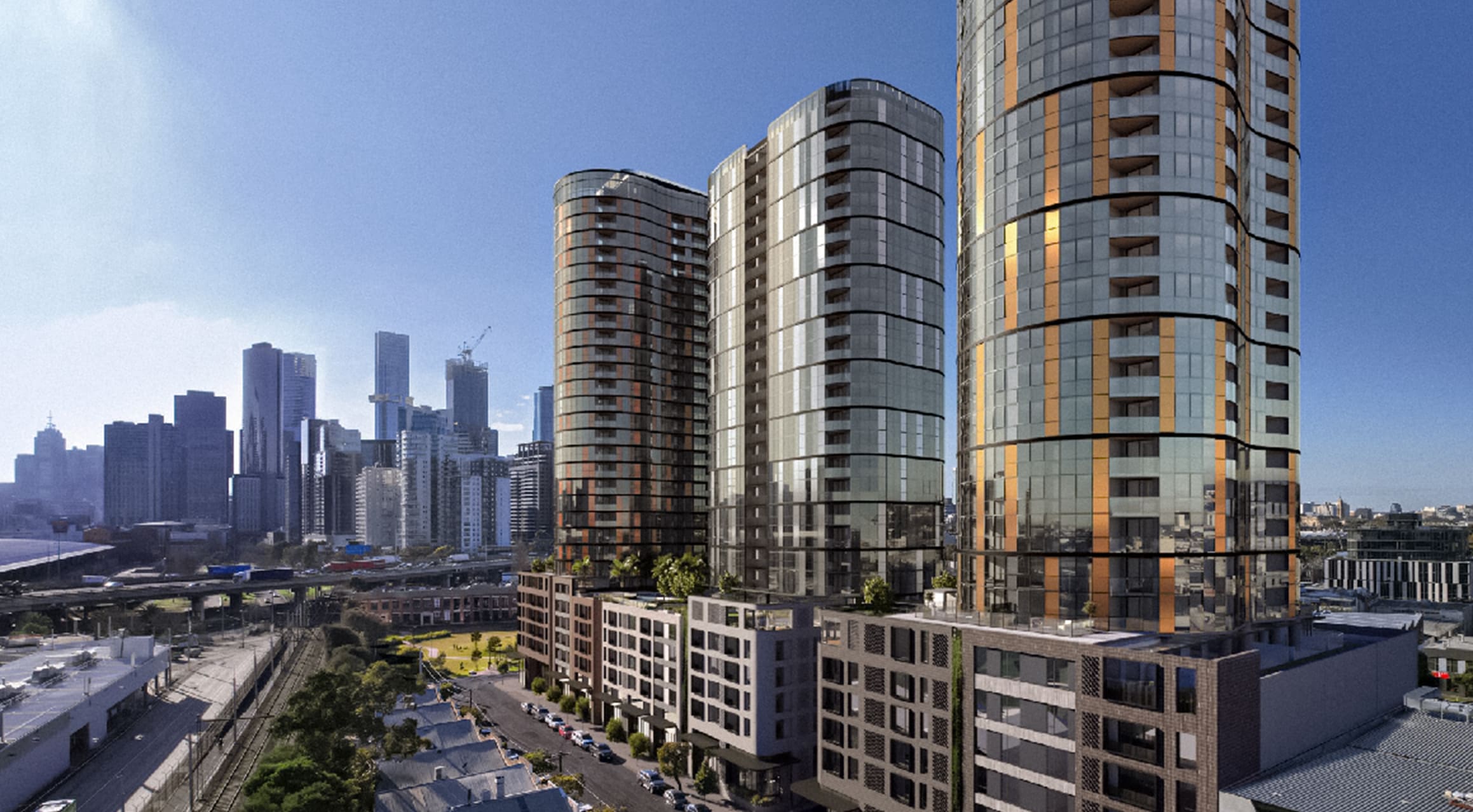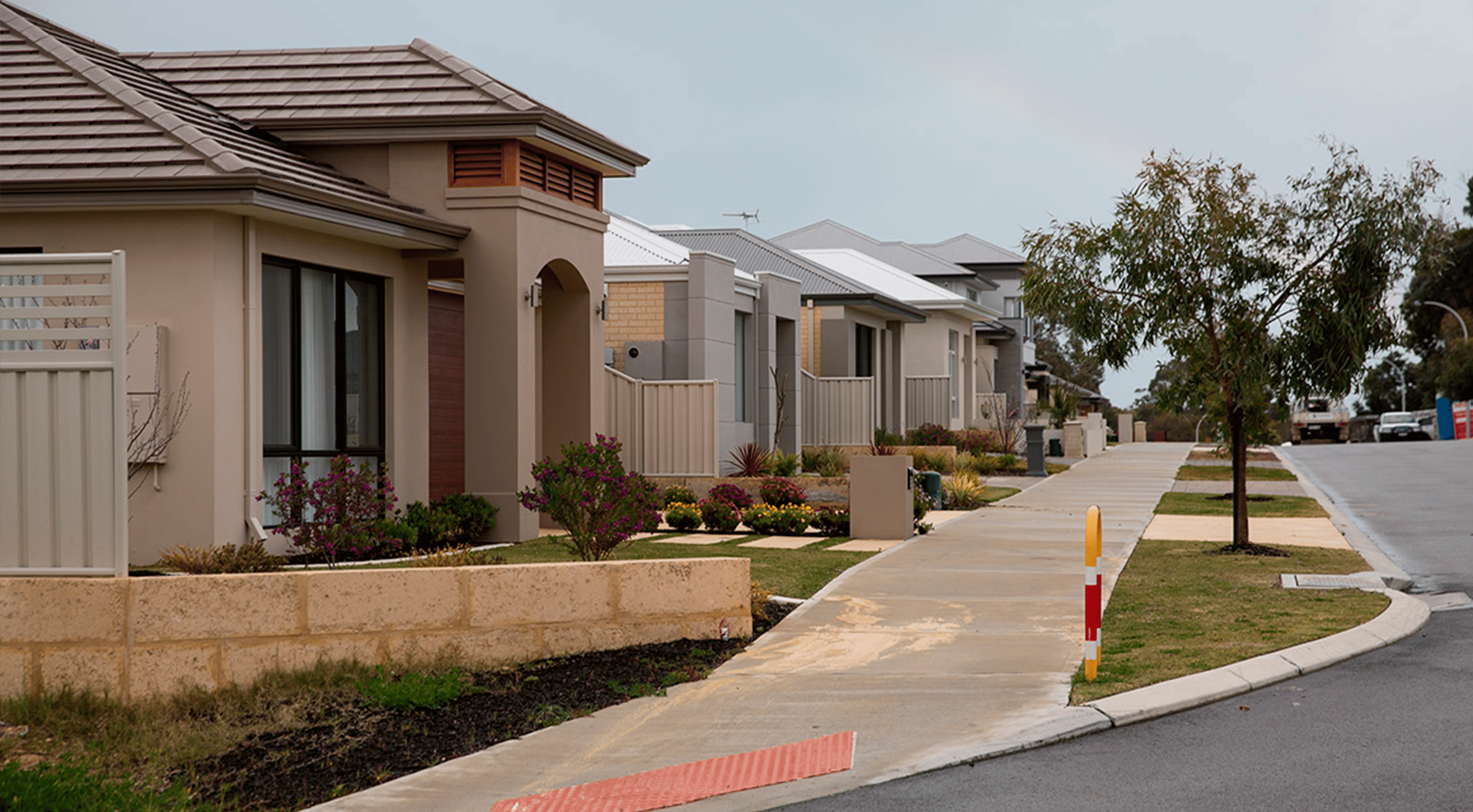Features > Property News & Insights > Investment News
Will build-to-rent fix Australia's rental crisis?

Image from arcadiala.com.au
KEY POINTS
- The Build-to-Rent or BTR housing sector is in its infancy in Australia, but that could change if parliament alters rules taxing foreign investment in the sector
- The BTR sector needs big cash injections from foreign investors—usually overseas pension funds—to fund more developments in Australia
- BTR properties are usually rented to tenants at a premium compared to similar properties available in the private rental market
- The overwhelming bulk of rental accommodation in Australia is provided by ordinary “Mum and Dad” investors
There’s been a lot of talk lately—particularly from politicians, lobby groups, and developers—about the merits of “Build To Rent” or BTR and the impact it might have on easing the current rental crisis in Australia.
A housing shortage at a time of high population growth, record low vacancy rates, and higher interest costs for owners, has seen weekly rents surge nearly 40% across the country (more in some cities and towns) over the last five years.
The BTR sector in Australia is currently tiny, with its proponents calling for more favourable tax treatment, so more large foreign investors—like private equity firms and overseas pension funds—can pile in.
My view is to be careful what you wish for because there’s plenty of evidence that BTR might actually make the rental crisis worse.
What is BTR?
Build To Rent, or BTR, is “purpose-built and designed long-term residential rental accommodation predominantly owned, managed and operated by an institutional investor for a long-term investment period.”
That definition comes straight from the Property Council of Australia - one of the main proponents of the housing form in Australia.
According to the Property Council, about 5% of housing in the United Kingdom and 12% in the United States is located in BTR developments.
Currently, just 0.2% of housing in Australia is BTR.
Usually, BTR developments are large, well-located apartment blocks with plenty of common, on-site amenities, not unlike a hotel.
The building is run and maintained by a company, and apartments can only be leased and not purchased.
Higher rents
To cover the upkeep of common facilities and the overheads involved in managing the building while producing a profit for shareholders, rents in BTR developments are usually offered at a premium to similar properties in the private market.
In the UK, the BTR price premium is, on average, around 10%, but in Australia, it’s often more.
Two years ago, real estate advisor Charter Keck Cramer analysed advertised rents at Mirvac’s LIV Indigo BTR development at Sydney Olympic Park.
When they compared them to rents for similar private rental apartments in the same location, the median rent for a one-bedroom apartment was 19% higher, while 2-bedders were 27% more expensive.
More recently, community housing group Grounded reported that rents at the Smith Collective, Australia’s first large-scale BTR project at Southport on the Gold Coast, have grown 50% in two years.
Grounded director Karl Fitzgerald recently told a senate inquiry examining the government’s proposed BTR tax regime for foreign investors that Build to Rent could pave the way for the “corporatisation” of Australia’s rental market.
“This legislation rolls out the welcome mat for rent maximisation strategies,” he told the inquiry.
He pointed out there were no protections for tenants in the bill, which means they could still receive steep rental increases.
“There’s nothing in this legislation that prepares us for what’s coming,” he said.
Big corporates
At the same inquiry, the Property Council’s CEO, Mike Zorbas, was flanked by representatives of HOME and Mirvac, two of the large corporates (and Property Council members) pushing BTR in Australia.
On the 8th of August 2024, Mirvac announced its plans to offload a lot of its office building holdings, so it can concentrate on more profitable ventures like BTR and building warehouses.
The Property Council argues that the growth of the BTR sector “is stunted in Australia” because overseas investors—mostly foreign pension funds—currently have to pay double the amount of tax they would if they were investing in Australian office buildings, shopping centres, hotels, and industrial property.
The Council says the original BTR legislation—unveiled in May last year—could have paved the way to deliver 160,000 new apartments over the next ten years, “including 10,000 affordable homes.”
“That opportunity has been squandered, but sensible and simple fixes can still deliver 105,000 rental homes,” according to CEO Mike Zorbas.
No mention of affordable homes any more.
Remember that the Federal government has set a target to deliver 1.2 million “well-located and affordable” homes by mid-2029?
I think we can safely say very few of those will be BTR dwellings.
Putting BTR in context
One of the most sensible voices in this space is developer Maxwell Shifman.
He is the CEO of Intrapac Property and a former President of the Urban Development Institute of Australia.
Mr Shifman says BTR developments have the potential to offer “some valuable things to long-term renters,” including security of tenure, professional building and rental management services, and better facilities and maintenance due to building single ownership.
“There's only one fairly large issue - what can be delivered feasibly is not "affordable",” he says.
“Given the costs of apartment development, the business model for Build to Rent relies on:
- Premium market rents;
- or rental subsidies
- or a combination thereof.”
“Any affordable component needs to be subsidised by the other renters so market rent is higher, or it needs subsidies from the States or Commonwealth (in cash or cheap land).”
“You certainly won't see many three bedroom family sized BTR apartments,” he says.
Mum and Dad investors
So, if BTR only currently makes up about 0.6% of housing in Australia, and given that one-third of Australians are tenants, where does the overwhelming bulk of rental property come from?
The answer is “Mum and Dad” investors, ordinary Australians who have tried to build some wealth for their families by investing in residential property.
Ray White’s Chief Economist, Nerida Conisbee, recently studied the contribution of private “Mum and Dad” landlords to housing in Australia.
“Between 1996 and 2021, there were an additional 1.1 million rental properties provided by investors (private landlords),” Ms Conisbee said.
“Compare this to an increase of 41,000 homes provided by community groups and a LOSS of 53,000 rental properties provided by the government.”
Despite talk of “Big” housing builds, it turns out state governments and territory governments have actually been really reluctant to invest big sums in public housing.
It costs a lot to plan, design and build really high-quality housing stock and then it’s very expensive to maintain it.
That’s why BTR rents are so high, with the added factor that they have to provide a worthwhile profit to their (largely) overseas shareholders.
“Although they are frequently criticised, incentives available to property investors in Australia have been successful in providing a steady stream of rental properties and keeping the proportion of households under rental stress at globally low levels,” Ray White’s Nerida Conisbee says.
If there are tax policy changes and government subsidies that open the door to wide-scale BTR investment from overseas into the Australian housing market, there could be unintended consequences, spooking investment from the people already doing the heavy lifting—Mum and Dad investors.
“If tax policy is changed that makes owning a rental property less attractive, there will immediately be far fewer rental properties available,” Nerida Conisbee concluded.
Mum and Dad investors have provided the overwhelming bulk of rental housing in Australia for at least the last 25 years, and anything that has the potential to upset that or discourage more ordinary Australians from investing in residential property is, in my opinion, bad news.
I also don’t know that handing over a larger slice of Australia’s housing market to big faceless corporations controlled by foreign money who can rent-gouge is going to improve affordability for tenants.
Stay Up to Date
with the Latest Australian Property News, Insights & Education.




.png?width=292&height=292&name=Copy%20Link%20(1).png)
 SIGN UP FOR FREE NEWSLETTER
SIGN UP FOR FREE NEWSLETTER
%20(1).png)

.png)





.jpg?width=1920&height=1080&name=Warning%2c%20You%20Might%20Be%20Facing%20Higher%20Taxes%20Soon%20(1).jpg)





.png?width=1920&height=1080&name=Rate%20Drops%20Signal%20BIGGEST%20Property%20Boom%20in%20DECADES%20(1).png)

.jpg?width=1920&height=1080&name=Labor%20vs%20Liberal%20These%20Housing%20Policies%20Could%20Change%20the%20Property%20Market%20Forever%20(1).jpg)
.jpg?width=1920&height=1080&name=QLD%20Slashes%20Stamp%20Duty%20Big%20News%20for%20Investors%20%26%20Home%20Buyers%20(1).jpg)
.jpg?width=1920&height=1080&name=Trump%20Just%20Slapped%20Tariffs%20%E2%80%93%20Here%E2%80%99s%20What%20It%20Means%20for%20Australia%20(1).jpg)
.jpg?width=1920&height=1080&name=Federal%20Budget%202025%20More%20Debt%2c%20No%20Housing%20%E2%80%93%20Here%E2%80%99s%20What%20You%20Need%20to%20Know%20(1).jpg)
.jpg?width=1920&height=1080&name=Australias%20Housing%20Crisis%20is%20about%20to%20get%20MUCH%20Worse%20(New%20Data%20Warns).jpg)
%20(1).jpg?width=1920&height=1080&name=Australias%20RENTAL%20CRISIS%20Hits%20ROCK%20BOTTOM!%20(2025%20Update)%20(1).jpg)
%20(1).png?width=1920&height=1080&name=Is%20Adelaide%20Still%20a%20Good%20Property%20Investment%20(2025%20UPDATE)%20(1).png)
.jpg?width=1920&height=1080&name=RBA%20Shocks%20with%20Rate%20Cuts!%20What%E2%80%99s%20Next%20for%20Property%20Investors%20(1).jpg)
%20(1).jpg?width=1920&height=1080&name=I%20Predict%20The%20Feb%20Rate%20Cut%20(My%20Price%20Growth%20Prediction)%20(1).jpg)
.png?width=1920&height=1080&name=Why%20Property%20Prices%20Will%20Rise%20in%202025%20Market%20Predictions%20(1).png)
.jpg?width=1920&height=1080&name=Why%20Investors%20Are%20Choosing%20Apartments%20Over%20Houses%202%20(1).jpg)
.jpg?width=1920&height=1080&name=Why%20Rate%20Cuts%20Will%20Trigger%20A%20Property%20Boom%20(1).jpg)
.jpg?width=1920&height=1080&name=Retire%20On%202Million%20With%20One%20Property%20(Using%20SMSF).jpg)
.jpg?width=1920&height=1080&name=4%20Reasons%20Why%20You%20Should%20Invest%20in%20Melbourne%20Now%20(1).jpg)
%20(1).jpg?width=1920&height=1080&name=Old%20Property%20vs%20New%20Property%20(Facts%20and%20Figures%20Revealed)%20(1).jpg)
%20(1).jpg?width=1920&height=1080&name=Will%20The%20New%20QLD%20Govt%20Create%20a%20Property%20Boom%20or%20Bust%20(My%20Prediction)%20(1).jpg)
%20Scott%20Kuru%20(1).jpg?width=1920&height=1080&name=Inflation%20Hits%20Three-Year%20Low%20(Will%20RBA%20Cut%20Rates%20Soon)%20Scott%20Kuru%20(1).jpg)
.jpg?width=1920&height=1080&name=How%20to%20Buy%20Investment%20Property%20Through%20SMSF_%20The%20Ultimate%20Guide%20(1).jpg)
.jpg?width=1920&height=1080&name=Victoria%20Slashes%20Stamp%20Duty%20Melbourne%20Set%20to%20Boom%20Scott%20Kuru%20(1).jpg)
.png?width=1571&height=861&name=Are%20Foreign%20Buyers%20Really%20Driving%20Up%20Australian%20Property%20Prices%20(1).png)
.jpg?width=1920&height=1080&name=The%20Single%20Factor%20That%20Predicts%20Property%20Growth%20Regions%20(1).jpg)
%20Scott%20Kuru%20(1).jpg?width=1920&height=1080&name=My%20Prediction%20On%20Rates%20%26%20Negative%20Gearing%20(Market%20Crash)%20Scott%20Kuru%20(1).jpg)

-1.png?width=1920&height=1080&name=Major%20Banks%20Cut%20Rates%20Will%20RBA%20Follow%20Suit%20(Sept%20Rate%20Update)-1.png)
%20Scott%20Kuru-1.png?width=1920&height=1080&name=Rate%20Cut%20Coming%20What%20New%20Zealands%20Move%20Means%20for%20Australia%20(Sept%20Prediction)%20Scott%20Kuru-1.png)
%20(1).jpg?width=1920&height=1080&name=Buy%20when%20the%20interest%20rates%20are%20high!%20(Why%20you%20must%20buy%20now!)%20(1).jpg)
.jpg?width=1920&height=1080&name=Carms_Revised%20Taxes%20Due%20Aug%209%20YT%20Thumbnail02%20(1).jpg)
.jpg?width=1920&height=1080&name=Carms_Too%20Little%20Too%20Late%20Aug%207%20YT%20Thumbnail01%20(1).jpg)









.jpg?width=1920&height=1080&name=Carms_Rate%20Drop%20In%20July%20Jun%2010%20YT%20Thumbnail02%20(1).jpg)
.jpg?width=1920&height=1080&name=Carms_Own%20a%20Property%20V6%20Jun%205_YT%20Thumbnail%20(1).jpg)









.png?width=1920&height=1080&name=Artboard%201%20(3).png)






.jpg?width=1920&height=1080&name=YT%20thumbnail%20%20(1).jpg)

